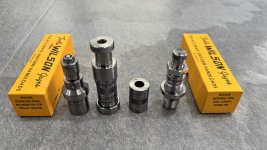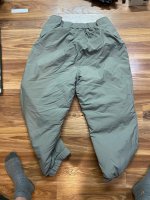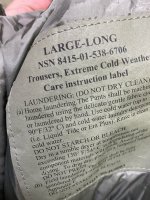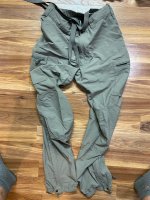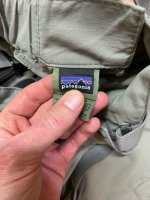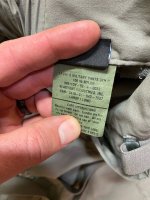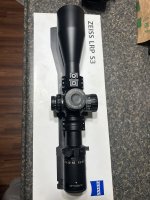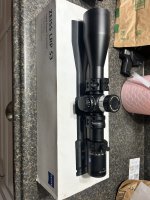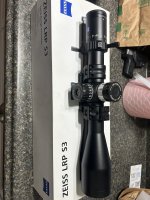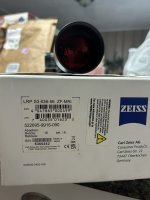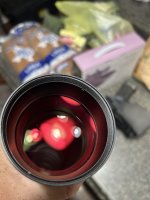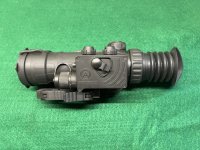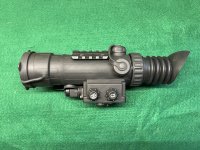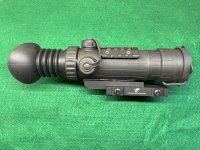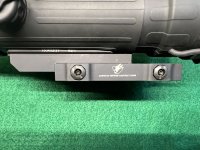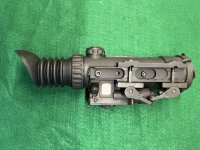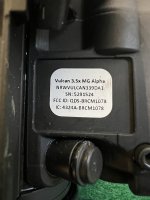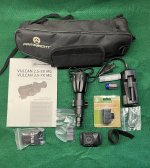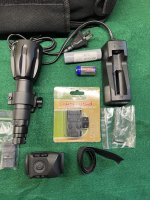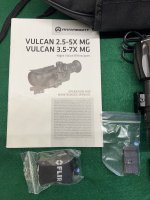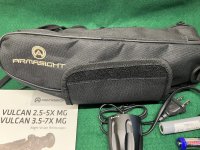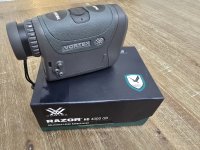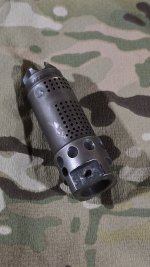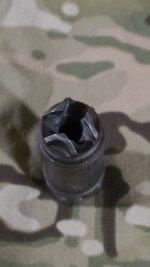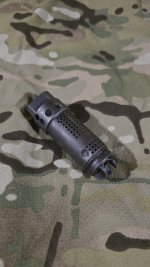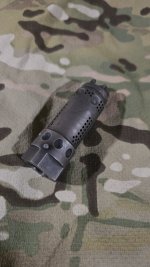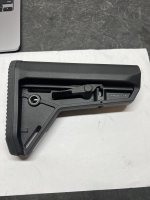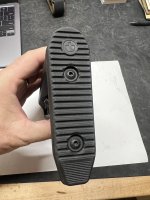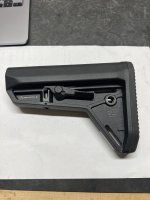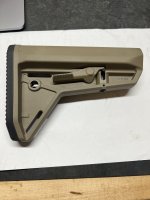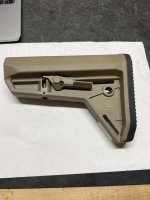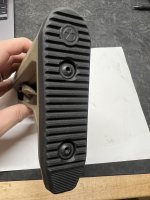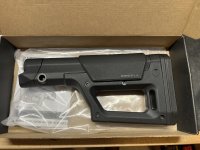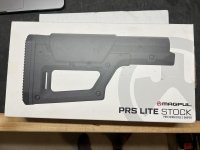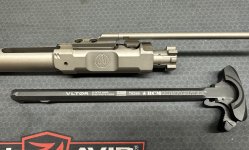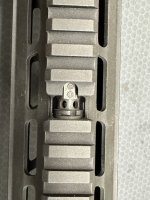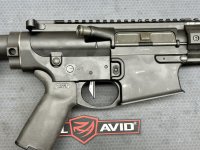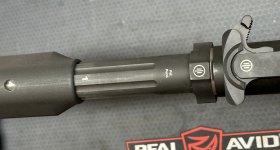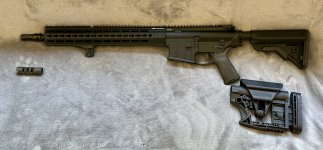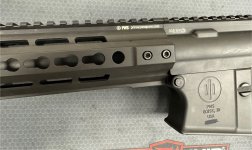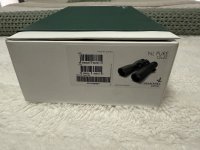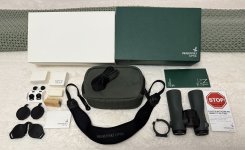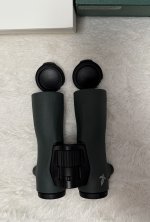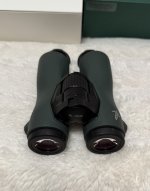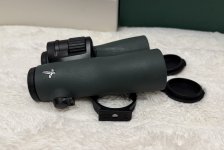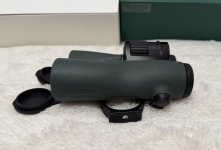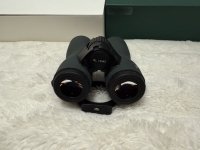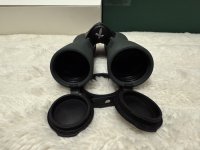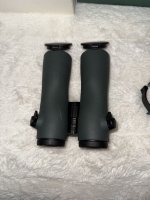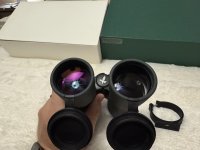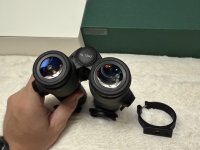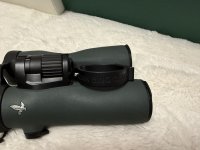This scope is in excellent condition with the original box and accessories. It was mounted on a 6.8 SPC, zeroed in, and used on one hog hunt. It works great, but the opportunity to use it more has not presented itself. $2900 OBO plus shipping. Trades considered. Contact Dan Zelenka at (504) 421-1323 or
[email protected] for more information.
The Armasight 3.5x Vulcan Night Vision Rifle Scope - Alpha MG boasts a ton of amazing features including wireless remote control, ability to use either CR123A or AA battery and a quick release Picatinny mount with locks. Small on dimensions, but big on value – this scope will not unbalance your rifle; it mounts on an adjustable mount that will fit weaver or Picatinny rails and can be mounted in seconds without tools. Complete with tactical rails for lasers or illuminators (high power IR illuminator included), this scope is ideal for the predator hunter, tactical marksmen, or anyone that needs a compact and light night vision Rifle Scope. The Armasight Vulcan Night Vision Scope has multicoated all-glass lenses and an internally adjustable fine reticle that makes precise shot placement incredibly easy. This Armasight Night Vision Rifle Scope is also water, dust and sand proof for increased reliability.
Specifications for Armasight Alpha MG Vulcan Night Vision Rifle Scope - 3.5x:
Image Intensifier Tube: Gen 3 Alpha - High Performance 64-72 lp/mm
Magnification: 3.5x
Lens System: F1.67, F80 mm
FOV (°): 12
Exit Pupil (mm): 7
Eye Relief (mm): 45
Diopter Adjustment: -4 to +4
Controls: Direct
Remote Control: Yes (wireless)
Brightness Control: Automatic/Manual(optional)
Infrared Illuminator: Long range (detachable)
Low Battery Indicator: Yes (in FOV)
Power Supply: 1xCR123A(3V) or 1xAA(1.5V)
Battery Life (hrs): 50 (CR123A) / 46 (AA)
Reticle System: Red on Green
Reticle Pattern: Duplex
Windage & Elevation Adjustment: 1/3 MOA
Environmental Rating: Waterproof
Operating Temperature (VC): -40 to +50
Storage Temperature (°C): -50 to +70
Dimensions inches: 9.8 x 3.8 x 2.8
Weight w/o Mount or Battery lbs: 2.0
Features of Armasight Vulcan Rifle Scope - Alpha MG:
• Wide array of IIT configurations
• Shock protected, all-glass IR transmission multicoated optics
• Bright light cut-off
• Illuminated reticle with brightness adjustment
• Variable gain control (optional)
• Wireless remote control included
• Detachable long-range infrared illuminator
• Waterproof design
• Powered by a single CR123A Lithium or AA battery
• Low battery indicator
• Quick release mount
• Mounts to standard weaver rails
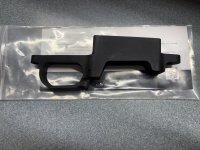 IMG_0304.jpeg2.3 MB · Views: 38
IMG_0304.jpeg2.3 MB · Views: 38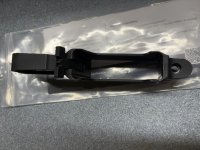 IMG_0305.jpeg1.9 MB · Views: 30
IMG_0305.jpeg1.9 MB · Views: 30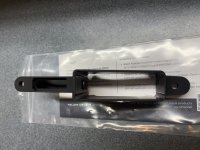 IMG_0306.jpeg1.9 MB · Views: 20
IMG_0306.jpeg1.9 MB · Views: 20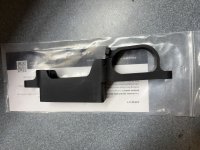 IMG_0307.jpeg2.3 MB · Views: 25
IMG_0307.jpeg2.3 MB · Views: 25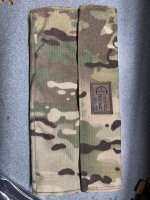 IMG_0308.jpeg2.9 MB · Views: 27
IMG_0308.jpeg2.9 MB · Views: 27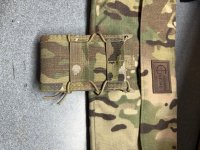 IMG_0309.jpeg2.2 MB · Views: 34
IMG_0309.jpeg2.2 MB · Views: 34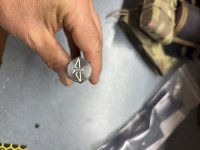 IMG_0313.jpeg971.1 KB · Views: 33
IMG_0313.jpeg971.1 KB · Views: 33 IMG_0314.jpeg2.1 MB · Views: 31
IMG_0314.jpeg2.1 MB · Views: 31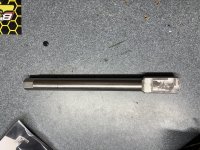 IMG_0315.jpeg2.4 MB · Views: 35
IMG_0315.jpeg2.4 MB · Views: 35
